Mednova’s iMBD dual-energy X-ray bone densitometer (DXA) helped the 2025 Shanghai osteoporosis screening event for middle-aged and elderly people to be a complete success.
2025 "Osteoporosis Screening Management Standards" released, Mednova’s dual-energy X-ray bone densitometer assists grassroots free clinics.
With the accelerated aging of China's population, osteoporosis has become a significant health concern for middle-aged and elderly people. The results of the China Osteoporosis Epidemiological Survey, released by the National Health Commission in 2018, show that osteoporosis has become a significant health issue for people over 50 in China. The prevalence rate among those over 50 is 19.2%, with osteoporosis being particularly severe in women, with a prevalence rate as high as 32.1%. The prevalence rate among women over 65 reaches 51.6%, significantly higher than in Europe and the United States. In recent years, the national and local governments have attached great importance to bone health . With the advancement of the tiered diagnosis and treatment system, primary healthcare institutions are becoming the primary focus of bone density screening.
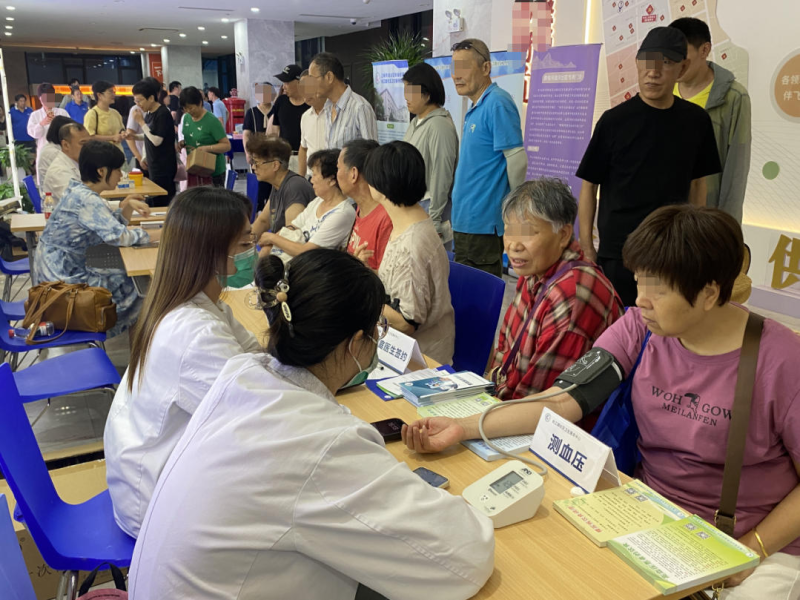
In September 2025, in response to the call of the National "Healthy China 2030" Outline , to strengthen the comprehensive prevention and control of chronic diseases and enhance early screening and early detection , Mednova Medical cooperated with Shanghai Fengxian Community Health Center, Shanghai Qingpu Community Health Center and other institutions to carry out home health management for middle-aged and elderly people and osteoporosis screening and other chronic disease free clinics.
(In accordance with the requirements of the "Osteoporosis Screening Management Specifications" group standard issued by the Shanghai Quality Association in July 2025, Mednova Medical was invited to participate in free home health management and osteoporosis screening and other chronic disease clinics for middle-aged and elderly people organized by institutions such as Shanghai Fengxian Community Health Center and Shanghai Qingpu Community Health Center.)
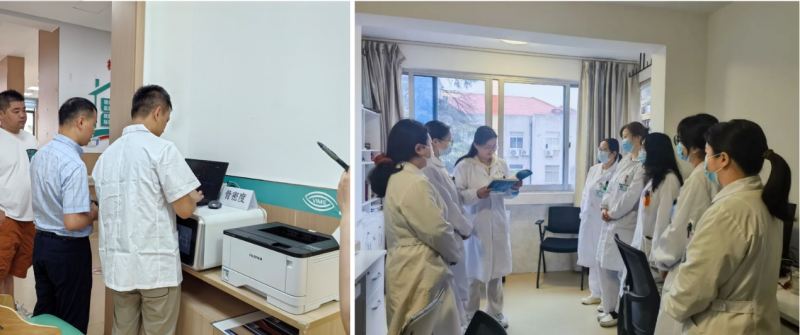
the doctors were deeply impressed by the ultra-portable design and fully shielded protection of the Mednova’s iMBD dual-energy X-ray bone densitometer . Dr.Zhao, who oversaw the event, explained, " Traditional X-ray bone densitometers typically require separate shielded rooms within hospital departments, which not only increases hospital construction costs but also creates inconvenience for operators and patients. This device, however, features a fully shielded lead protection design, which provides peace of mind for both us operators and our patients."
He believes that the Mednova’s iMBD series bone densitometer is compact, with a main body size of less than 0.1 cubic meters and a weight of just over 30 kilograms. This design allows the device to be easily transported in the trunk of an SUV , saving time and effort for medical outreach to hospitals, clinics, and remote rural areas .
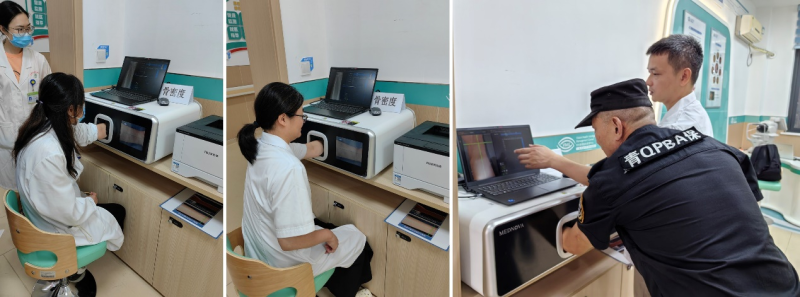
Hearing that the Mednova dual-energy X-ray bone densitometer uses low-dose green imaging technology, the health center's security guard and several doctors took advantage of their lunch break to experience it firsthand. Dr.Xu, who had just given birth to her second child , looked at the T-values on the diagnosis report and exclaimed, "It's really accurate! Last month, I had my lumbar spine and femur tested on a bed-type DXA machine, and the T-values there were within 0.1 of the results on this device. I'm going to have my mother tested this afternoon."
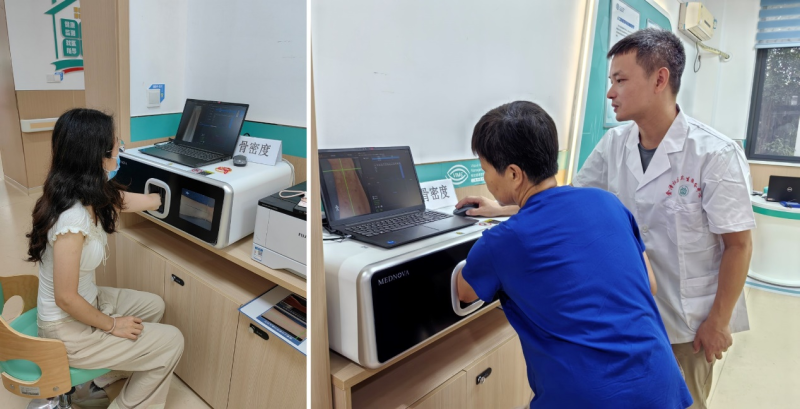
Dr. Li, a geriatrician with 15 years of experience, praised the Mednova’s dual-energy X-ray bone densitometer. He exclaimed, "This machine is very easy to operate. Once the patient is positioned, the image is displayed in less than a second. The software automatically identifies and locks onto the distal third of the radius , greatly improving operational efficiency. Especially during today's free clinic, where there were long lines, it used to take 8-10 minutes to screen a patient with other machines. Now, it only takes 1-2 minutes, which is really convenient." The report is also comprehensive, covering key indicators such as bone mineral density (BMD), bone mineral content (BMC), T-score, and Z-score, providing doctors with a comprehensive assessment of their patients' bone health.
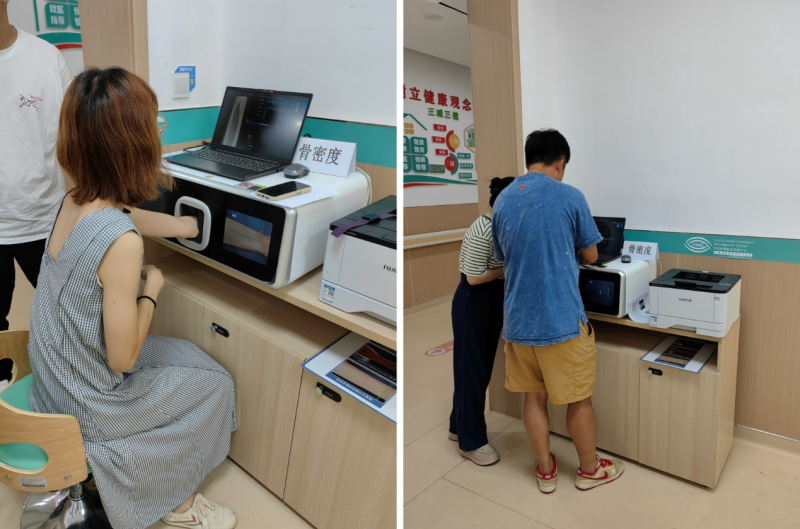
This event provides free bone density testing for community residents. Ms. Wang, who had been feeling weak and experiencing back pain recently, initially thought it was menopause, but discovered it was osteoporosis. "Today, I had a dual-energy X-ray absorptiometry scan, and the results came back in a second. The specialist gave me the report, and I realized I had osteoporosis." Upon learning that the community hospital has a specialized osteoporosis clinic, Ms.Wang decided to make time to see a specialist for a thorough consultation.
One of the National Health Commission stated: "As China enters an aging society, the health needs of middle-aged and elderly people are becoming increasingly prominent. Osteoporosis is a disease with high morbidity and harm, but low diagnosis and treatment rates. Its potential risk of disability and death, as well as the burden it brings to families and society, cannot be ignored. This event aims to increase the screening and diagnosis rate of osteoporosis in the community , promote the optimization and improvement of primary medical resources, explore a grassroots osteoporosis management model that can be implemented nationwide, help the majority of patients receive early diagnosis and treatment, and promote the implementation of the Healthy China Initiative at the community level."
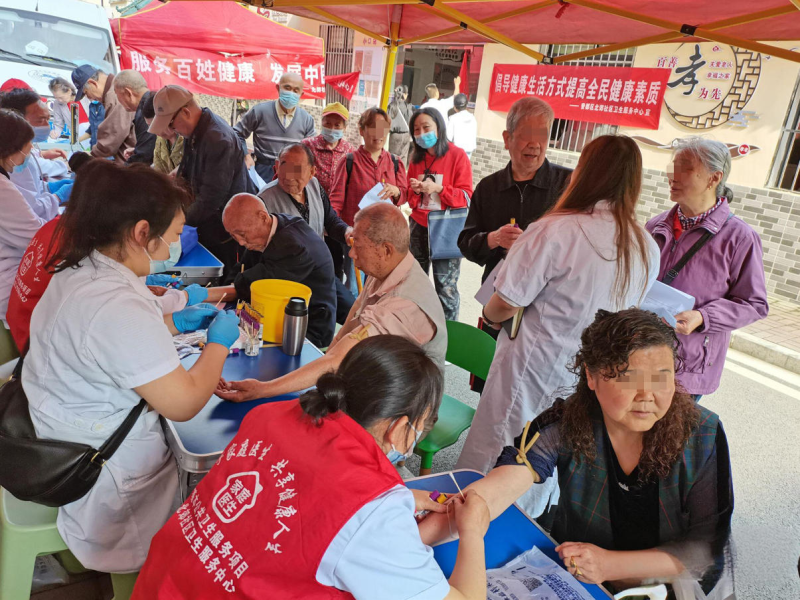
Over 100 residents benefited from this event, including seniors, middle-aged adults, and adolescents. Experts emphasized that osteoporosis prevention and treatment should begin at a young age, focusing on diet, exercise, and lifestyle, as prevention is better than cure. At the free clinic, doctors also distributed a popular science brochure titled "Pay Attention to Osteoporosis, Protecting Elderly Health," to raise awareness of osteoporosis and remind residents to get regular checkups and stay informed about their health.
As the "standardized diagnosis and treatment of osteoporosis at the grassroots level" model becomes increasingly mature, community health service centers will also gradually launch specialized diagnosis and treatment services for osteoporosis, explore and promote tiered diagnosis and treatment and capacity improvement models suitable for special diseases represented by osteoporosis, expand the rooting and development of high-quality medical services for special diseases in the community, promote high-quality capacity building in the community, continuously benefit the people , and enjoy high-quality medical services at their doorstep .



